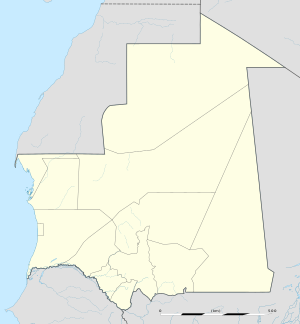Koumbi Saleh | |
|---|---|
Site of medieval town and Commune | |
Location within Mauritania | |
| Coordinates: 15°45′56″N 7°58′07″W / 15.76556°N 7.96861°W | |
| Country | |
| Area | |
| • Total | 1,484 km2 (573 sq mi) |
| Population (census 2013) | |
| • Total | 11,064 |
| • Density | 7.5/km2 (19/sq mi) |
Koumbi Saleh, or Kumbi Saleh, is the site of a ruined ancient and medieval city in south east Mauritania that may have been the capital of the Ghana Empire. It is also a commune with a population of 11,064 (census 2013).[1]
From the ninth century, Arab authors mention the Ghana Empire in connection with the trans-Saharan gold trade. Al-Bakri who wrote in eleventh century described the capital of Ghana as consisting of two towns 10 kilometres (6 mi) apart, one inhabited by Muslim merchants, and the other by the king of Ghana. The discovery in 1913 of a 17th-century African chronicle that gave the name of the capital as Koumbi led French archaeologists to the ruins at Koumbi Saleh. Excavations at the site have revealed the ruins of a large Muslim town with houses built of stone and a congregational mosque but no inscription to unambiguously identify the site as that of capital of Ghana. Ruins of the king's town described by al-Bakri have not been found. Radiocarbon dating suggests that the site was occupied between the late 5th and 14th centuries, with the urban period extending approximately from the 11th to the 14th centuries.
- ^ "Koumbi Saleh (Agricultural Urban Commune, Mauritania) - Population Statistics, Charts, Map and Location". www.citypopulation.de. Retrieved 2024-02-16.
